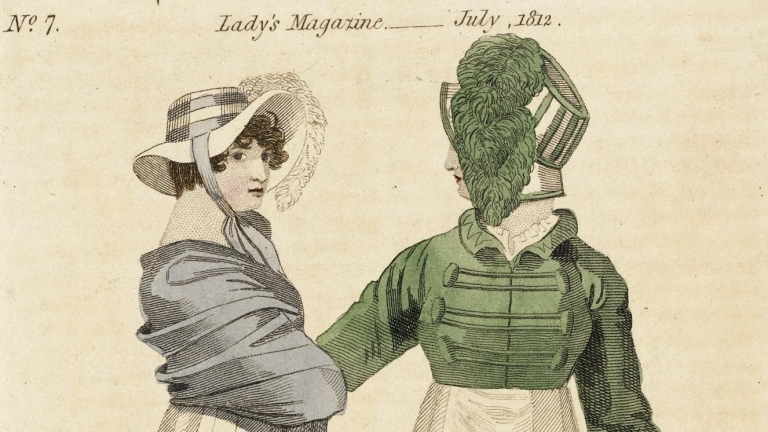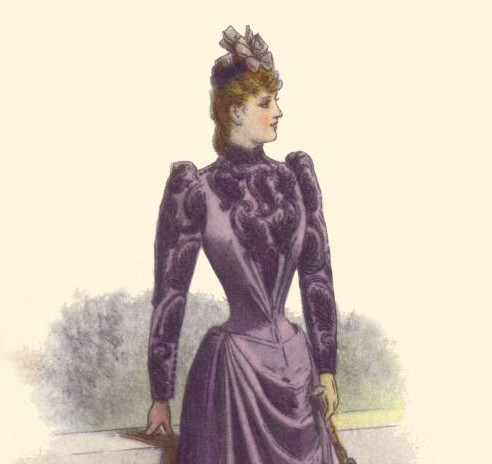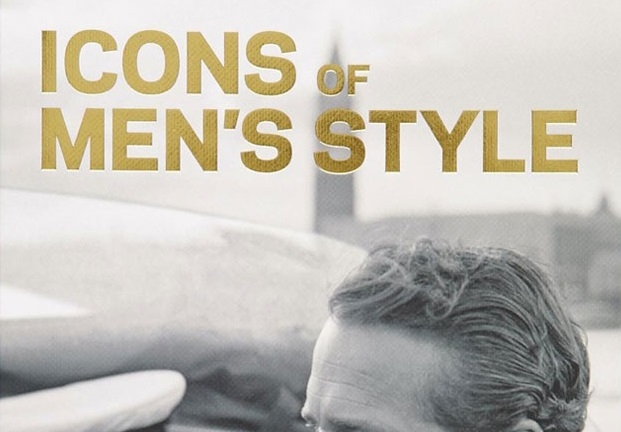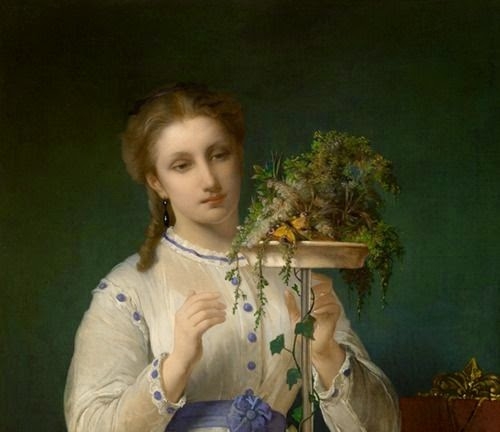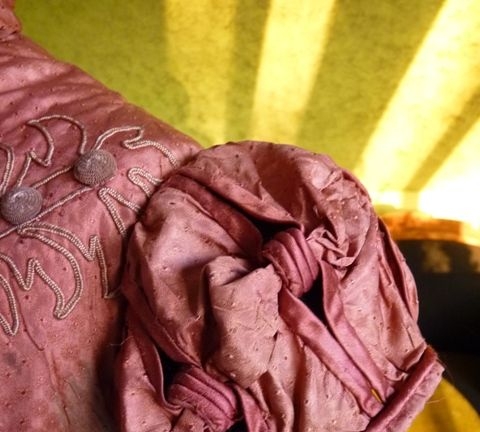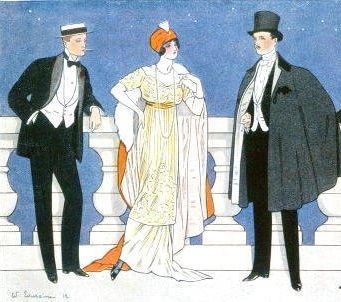When a Muslin Dress Just Isn’t Enough
by Jean Martin, First published for the January/February 2013 issue of Finery For most Regency events and balls, most of us costumers can get away with not wearing period-correct outerwear since we will most likely be indoors, or outdoors during the summer. However, if you want to wear a Regency costume this winter, or at an outdoor event such as […]
The Mauve Decade
by Judith Hollenberger Dunlap. Originally published for the November/December 2012 issue of Finery. Mauve was the first color of aniline dye discovered by William Henry Perkins as he searched for an artificial way to make quinine. The aniline dyes he developed in the latter half of the 19th century opened up fashion to an array of new colors, but mauve […]
Book Review: Icon’s of Men’s Style by Josh Sims
by George McQuary, First published for the September/October 2012 issue of Finery Since Beau Brummel, peacockery in men’s clothing has been shunned, innovation foresworn. The only changes in men’s clothing are in functional adaptations for industry, sports and military, which then slowly cross over into men’s fashion. Take aviator glasses. Created to solve a certain set of industrial problems (pilot […]
1930s: As Was the Fashion of the Time
by Suzette Davidson, First published for the May/June 2012 issue of Finery During the 1930s, tailored suits and day dresses made a strong impression as they became more accessible for day wear via “off-the-rack” clothing manufacturing. The industry was changing with the development of new synthetic materials and dyes. In addition, the zipper, or slide fastener, was first being used […]
Keeping Your Cool: Mid-Victorian Sheer Dresses
by Elizabeth Urbach, First published for the May/June 2012 issue of Finery Mid-Victorian daytime fashion was not all about heavy, opaque fabrics; warm weather allowed for light dresses of semi-transparent fabric like barege and muslin, trimmed with embroidery, ribbons and lace for a cool, floating visual effect. These gowns, called sheer dresses or “clear muslin dresses” were especially popular at […]
Pre-Raphaelites to Aesthetes: Their Influence on Aesthetic Dress
by Judith Hollenberger Dunlap, First published for the March/April 2012 issue of Finery The Artistic Dress movement in the late 19th century was born of two earlier artistic reform movements. In 1848 the Pre-Raphaelite Brotherhood was founded in Great Britain by William Holman Hunt, John Everett Millais, and Dante Gabriel Rossetti. This Brotherhood of painters, poets, and literary critics believed […]
Deciphering Regency Sleeves
by Jennifer Rosbrugh, First published for the March/April 2012 issue of Finery Fashionable dress in the Regency years (1795-1820) is fairly uncomplicated. Although the bodices and skirts are relatively simple, the true area of design is the sleeves. Where else do you put your personality into a garment if the skirt is plain straight and the top simply covers what […]
Edith Head: Star Costumer
by Kali Pappas, First published for the January/February 2012 issue of Finery Despite her long studio career and a stunning cache of major awards (including a record-setting 8 Oscars and 35 Oscar nominations), costume designer Edith Head is a star whose name isn’t widely recognizable. Her work, however, is instantly familiar to virtually everyone. She’s the woman responsible for the […]
Dressing for Dinner on the Titanic: Early 1910s Evening Dress
by Kendra Van Cleave, First published for the January/February 2012 issue of Finery When the Titanic set sail in April 1912, her first-class passengers boarded with trunks full of expensive, beautiful clothes. Most had probably been custom made in Paris, London, or the United States in the previous year. March and early April were a transitional period during this era, […]
19th Century Children
by Lynn Downward, First published for the November/December 2011 issue of Finery So you want to bring the kids to Dickens Fair this year – in costume! How can you possibly build children’s clothes when you’ve never researched them before and you have no time or money budgeted for it? In preparation for Dickens Fair, here is an overview of […]
